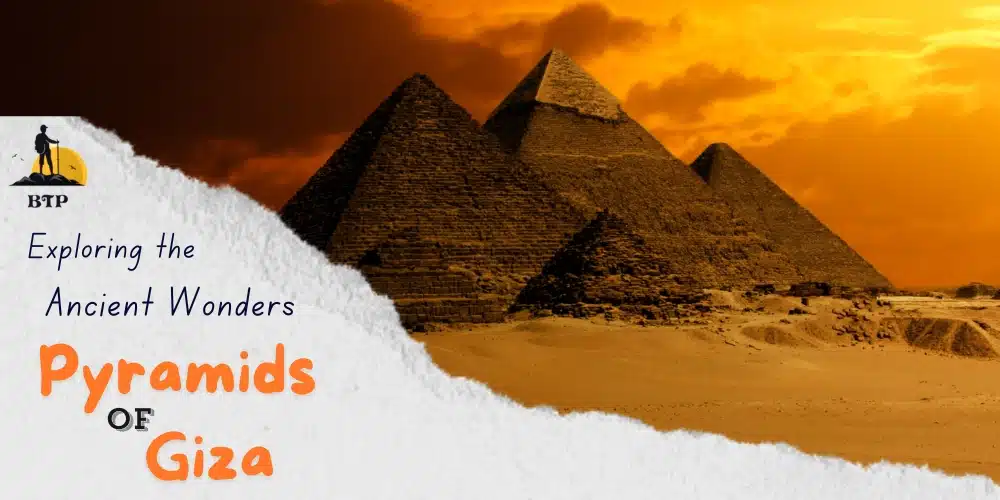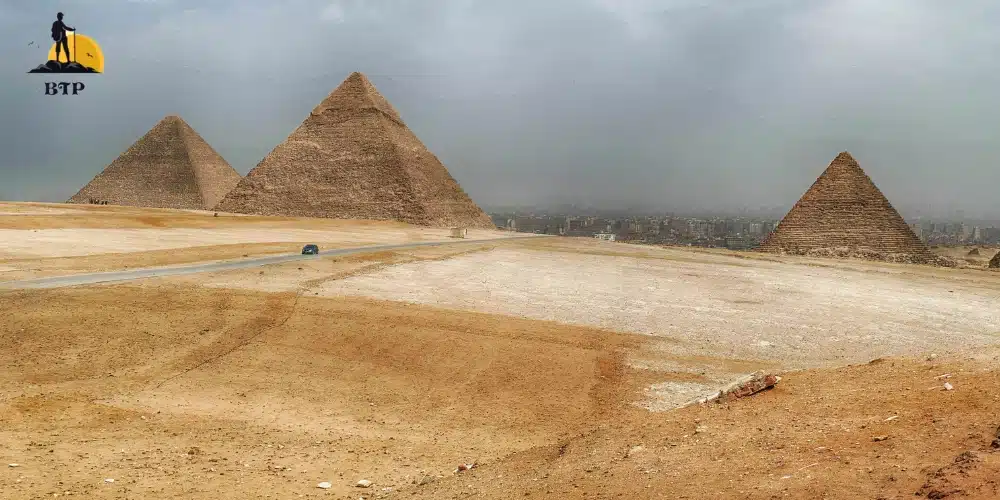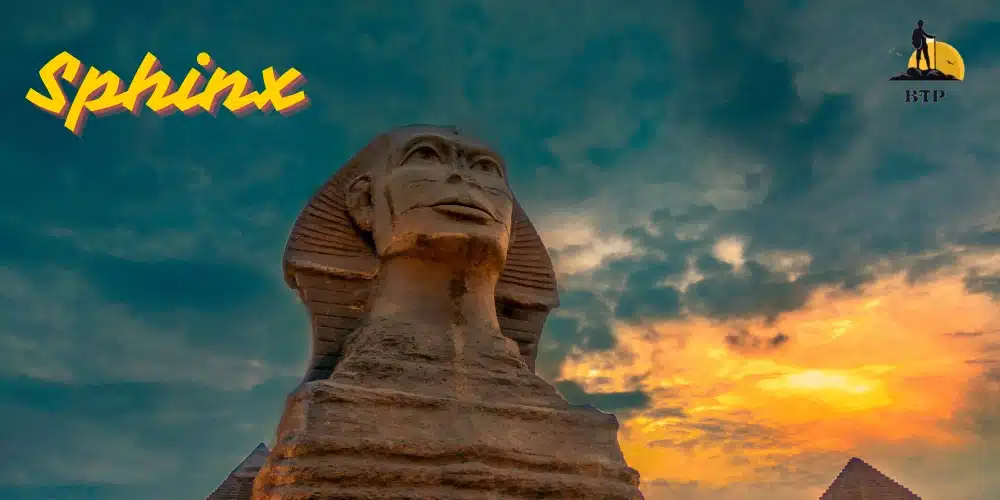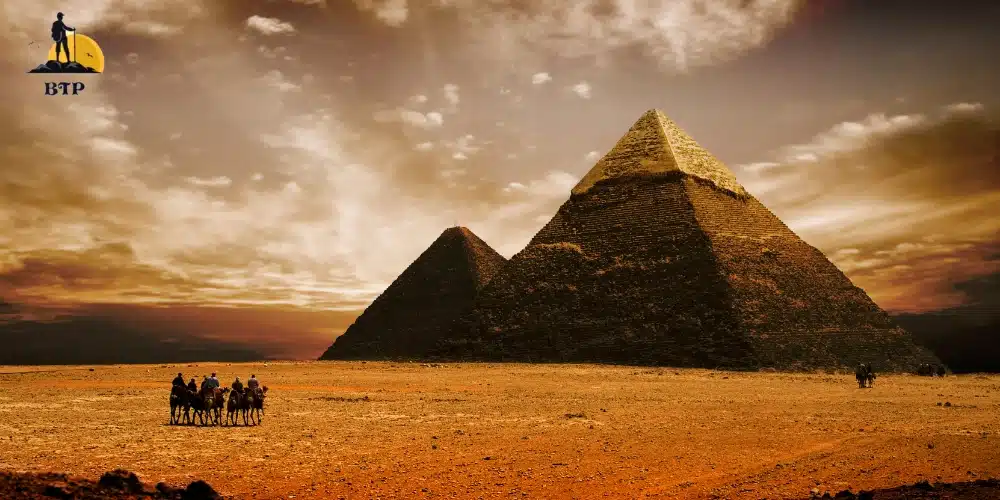Introduction:
The Pyramids of Giza located on the outskirts of Cairo, Egypt are an indication of human intelligence in architecture and have become a warped that they captured the thoughts of travelers, historians as well as explorers throughout history. For those who want amazing experiences or for students who take up history lessons, a journey to pyramids at Giza will certainly be unforgettable.
There is a unique chance to go into the history and culture of ancient Egypt when one visits the Giza Pyramids. From the towering Great Pyramid of Khufu to the enigmatic Sphinx, each monument tells a story of another era. Let’s untangle these mysteries and get ourselves on an adventurous trip through time behind Egyptian civilization.
The Majestic Great Pyramid of Khufu:
The Great Pyramid of Khufu is also called as Cheops’s pyramid; it is larger in size than other two pyramids situated at Giza. It was constructed over 4,500 years ago and once had height records with its original height being 481 feet (146.6 meters). Even today this colossal structure remains one most remarkable achievements ever undertaken by man in engineering science furthermore serves as a symbol representing ancient era accomplishments. As it was intended for Pharaoh Khufu’s burial place, this enormous edifice is made from more than 2 million blocks having average mass about 2.5 tons apiece that people can see when they approach this pyramid from any side.
Unveiling Secrets About The Sphinx:
Great sphinx guarding Giza plateau is an impressive limestone statue which has a body resembling that of lion but that whose head represents king khafre an Egyptian pharaoh. This very secret sculpture has remained appealing to numerous historians and archeologists centuries down the line because it lacks documented information accompanying it. The sphinx measures 240 feet in length and stands at height estimated at around twenty-six meters making it one of largest monolithic statues anywhere on earth surviving from antiquity to present times. The great sphinx is one of the oldest as well as largest known monolithic statues found in the world today; it measures 240 feet long and approximately twenty-six meters tall. Today, visitors can know more about its building theory, hidden chambers and passage theories beneath its paws.
The Pyramids: Engineering Marvels of Ancient Egypt:
To date, the construction of pyramids at Giza is still one of the most incredible human engineering achievements ever witnessed. Despite their age of over four thousand years, these structures are so precise that they are aligned not only to celestial bodies but also solar system planets. The exact method used by ancient Egyptians in transporting and assembling these huge stone blocks has always been an issue for speculation and amazement. On how they were built using ramps and levers to organization labor forces, studying the engineering techniques employed behind them reveals much about their level knowledge since this civilization was highly advanced.
A Journey Through History: Exploring the Giza Plateau:
This area is not only home to three famous pyramids but also extensive archaeological site which encompasses temples, tombs plus remnants belonging ancient settlements. Standing on this plateau feels like you have time traveled back where one can learn about what happened on daily basis to religious beliefs among people who lived here thousands years back ago if there were any then-ancient Egyptians’ lifeways. People who come here will find a chance to go through different smaller tombs belonging nobles government officials Valley Temple Khafre Solar Boat Museum just name few examples estate that make up big picture concerning practically every historic event taken place throughout centuries past should be seen anyone interested studying past engagements between humans such things ancient civilizations as history buffs cannot afford missing visit places like these
What is so special about the Pyramids of Giza?
The pyramids of Giza are not only known for their massive size but for the past they carry together with them. They are the only remaining wonders from the ancient world and continue to be a source of wonder and inquisitiveness. With their exact alignment to stars, advanced engineering methods used during construction, and myths or legends that surround them, these giant tombs never stop fascinating people. In seeing how these ancient constructions were made, one gets a deep sense of connection with humanity’s distant past as well as a better appreciation of what our ancestors could do.
How Were the Pyramids Built?
For generations scholars have debated how exactly the pyramids at Giza were constructed. Different hypotheses propose that there was employment of substantial workforces, complex equipment and brilliant means of moving stones that were exceptionally big. This may include straight or circular ramps or even water channels and amazing knowledge in geometry that must have been applied. By looking at these theories, visitors can truly comprehend how much brilliance was involved in making such architectural works which represent Egypt’s tribute to its pharaohs and deities.
Why Visit the Pyramids of Giza Today?
A visitation today at the pyramids brings a sense of historical exploration mixed with self-realization. Before these old buildings, one experiences what has kept this civilization captivating millions across millennia through time. For example, tourists visiting Giza today can go on guided tours or enjoy camel rides along with light and sound shows illustrating different aspects of pyramid history. As such Giza pyramids remind us about human creativity in addition to Egypt’s lasting heritage; hence they attract visitors who come from all corners if this planet.



